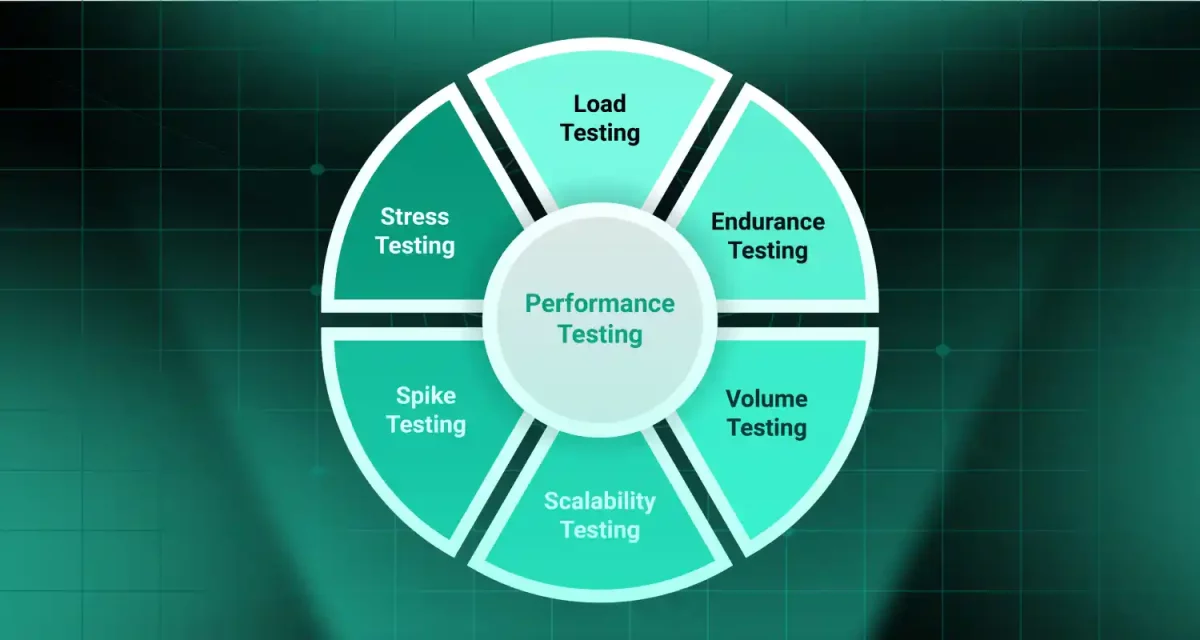
The ODC market stood at a staggering value of $92.5 billion in 2021, and an estimated 11.7% growth year on year is expected by 2030. ODC is not a glib new trend in business; it is a game changer. Want to know more about what is an offshore development center and why it has become an essential link to ensuring all businesses’ success in today’s digital world? Then check out the article for more with Stepmedia Software!
1. What is an offshore development center (ODC)?
An Offshore Development Center (ODC) is a dedicated team of software developers, engineers, and IT professionals based in a country different from the client’s headquarters. This model, often referred to as an “offshore development center” is designed to deliver cost-effective software development and IT services by utilizing lower labor costs and tapping into specialized talent pools available in offshore regions.

How it operates: ODC is like having another branch of your company in a different country, fully dedicated to handling software development or IT projects. Think of an ODC as an extension of your in-house team, operating remotely but using the same tools, methodologies, and processes to ensure alignment with your business goals. This collaborative way assists in growing businesses while making it possible to keep conformity to their operations.
Examples of offshore development centers:
1.1 Microsoft ODC in Vietnam
A great example of a large company using Offshore Development Centers (ODCs) in Vietnam is Microsoft. They’ve partnered with ODCs in the country to develop software solutions and tech services, taking advantage of Vietnam’s skilled IT workforce, competitive costs, and innovative capabilities.
1.2 Intel ODC in Vietnam
Another notable example is Intel, which operates ODCs in Vietnam focused on research and development, particularly in advanced semiconductor technologies.
1.3 Samsung and LG ODC in Vietnam
Companies like Samsung and LG have also established development centers in Vietnam, working on R&D for electronics and software solutions. These examples show why Vietnam is becoming a go-to destination for global tech giants looking to set up ODCs.
2. ODC vs. other outsourcing models
The term “outsourcing” encompasses various models, which can sometimes lead to confusion between Offshore Development Centers (ODCs) and other forms of outsourcing, such as traditional outsourcing and staff augmentation.
To clarify and better understand the unique advantages of each model, let’s dive into a comparison of ODCs and other software development outsourcing models.
|
Aspect
|
Traditional Outsourcing
|
Offshore Development Center (ODC)
|
Staff Augmentation
|
Freelancers
|
|
Focus
|
Project-based, short-term engagements
|
Long-term strategic partnership with a dedicated team
|
Filling specific skill gaps within an existing team
|
Short-term tasks requiring individual expertise
|
|
Control
|
Limited control over the team and processes
|
Significant control over the team, processes, and technology stack
|
High control over individual resources, but integration with the team can be challenging
|
Requires significant management effort to coordinate multiple freelancers
|
|
Communication
|
Primarily with project managers, less direct interaction with developers
|
Direct and frequent communication with the development team
|
Direct communication with individual resources
|
Communication varies and may require additional effort to manage effectively
|
|
Team Dynamics
|
Managed by outsourcing provider; less focus on long-term integration
|
Dedicated teamwork cohesively, promoting collaboration and knowledge sharing
|
Potential integration issues with existing teams
|
Independent contributors with little to no team cohesion
|
|
Scalability
|
Less flexible for scaling up or down quickly
|
Highly scalable, easily adjusted team size based on needs
|
Limited scalability depending on the availability of resources
|
Scaling requires hiring and managing multiple freelancers
|
|
Knowledge Retention
|
Limited, as the focus is short-term and knowledge often resides with the provider
|
Strong, as knowledge stays within the dedicated ODC team
|
Risk of knowledge loss when augmented staff leave
|
Minimal, as freelancers typically leave after project completion
|
|
IP Protection
|
Can be a concern due to less integration with the client’s systems
|
Enhanced due to dedicated team and infrastructure aligned with client’s security protocols
|
Depends on contract terms and the individual’s adherence to security practices
|
Potential risks due to lack of standardized processes
|
|
Reliability
|
Dependent on the outsourcing provider’s resources and processes
|
Consistent performance and availability due to a dedicated team
|
Relies on the quality and commitment of individual resources
|
Can be inconsistent in terms of availability and quality
|
|
Security
|
Moderate; depends on the provider’s policies
|
High; enhanced security through dedicated infrastructure and adherence to client’s standards
|
Varies depending on the individual’s practices
|
Potential risks due to lack of formal security protocols
|
|
Management
|
Managed by the outsourcing provider; minimal involvement from the client
|
Reduced management overhead due to established team and management structure
|
Requires active involvement to manage individual resources
|
High management overhead to coordinate tasks and timelines across freelancers
|
Looking at the comparison, it’s clear that each outsourcing model has its own strengths and weaknesses, depending on a business’s specific goals and needs. For short-term projects or tasks with clear requirements, traditional outsourcing or freelancers can get the job done. However, if your business is looking for a long-term solution with greater control, security, and scalability, an Offshore Development Center (ODC) model stands out as the superior choice.
Read more: Difference Between Onshore and Offshore Software Development
3. When to consider an offshore development center services?
Well, it seems like you have budget constraints that make it impossible for you to find the appropriate technology talent? Or is the project behind schedule mainly due to not having enough development resources?
If yes, then probably opening an Offshore Development Center (ODC) would be the best solution for you. The ODC is a preferred model for all long-term projects, constant development needs, an increase in team size within a limited time period, or when the project requires specific skills that are not easily available locally.
For instance, a fintech startup developing a complex mobile app saved 40% in costs by establishing an ODC in Vietnam. If you’re facing similar challenges, consider an ODC to achieve your business goals efficiently.
Read more: 4 Types of Offshore Development Centers: Which One is Right for You?
4. Benefits of using an offshore development center
Setting up an Offshore Development Center (ODC) can unlock incredible opportunities for your business. From cutting costs and accessing top global talent to boosting operational efficiency, an ODC offers a strategic edge in today’s competitive market. Benefits of offshore development centers for businesses include reducing expenses, enhancing flexibility, and leveraging specialized expertise. Here’s a closer look at the key benefits.
4.1 Cost savings
Low-cost developments, in fact, are one of the biggest draws for the businesses that choose to set up ODCs. They have been hired at significantly lower rates than those that one pays in developed countries for salaries and other benefits, which ultimately reduce the cost of software development as well. With these also comes the reduction in costs, such as office space, equipment, and employee benefits attached to it.

According to one of The Big 4 Auditing Firms, a company could save as much as 60% on development costs with an ODC, allowing work and resources to be redirected within the core business activities or into new projects.
4.2 Access to global talent
Through Offshore Development Centers, firms can get a good number of skilled professionals globally. ODC is a strategic model that provides businesses with access to global talent. Rather than hiring local talents, it is also possible to find experts from any part of the world with the right skills.
For example, India is the largest IT outsourcing workforce in the world, with around 1.4 million people working in the top IT firms (Source: TATEEDA). Thus, we are sure to hire the best in the field, no matter the distance.
4.3 Focus on core business
An internal team can bolster its core activities like strategy, marketing, sales, customer support, etc., by outsourcing software development work to an ODC. It increases overall productivity and the value you create in your customer experience as well as expands your market without needing to manage a development team.
4.4 Enhanced efficiency
Usually, ODCs operate 24/7 Mondays to Sundays, taking advantage of the time zone differences that ensure full-time development of tasks. This shortens the time-to-market and allows businesses to respond faster when developing new ideas and products into possible well-known brands.
For instance, the team in Vietnam would complete a day’s work, and the team in the U.S would pick it up from there to progress on the project.
4.5 Scalability and flexibility
The most amazing benefit that ODCs generally afford is that they can be scaled up very quickly. You require more man-hours on your team for an expanding project? In most cases, the ODC teams can be quickly augmented. The same goes when the project’s activity subsides; they can be trimmed back to avoid unneeded costs. Such flexibility ensures that companies can adapt swiftly to market shifts, all the while optimizing the use of resources.
5. Challenges of using ODCs
ODCs just like other centers, have many advantages that come with their establishment and management. However, with the right planning and strategies implemented, challenges that would otherwise be faced. The hurdle can now be conquered by businesses, hence, exploring the optimum benefits of ODCs.
- Communication barriers: Language differences and cultural nuances can lead to misunderstandings and communication issues.
- Time zone differences: Coordinating work schedules and managing real-time collaboration can be challenging due to time zone gaps.
- Quality control: Ensuring consistent code quality and adherence to standards across teams is essential for a successful offshore software development process.
- Security concerns: Protecting intellectual property and sensitive data from potential breaches.
- Cultural differences: Differences in work styles, expectations, and cultural norms may impact collaboration and understanding.
6. Key roles within an ODC team
Each individual role is critical to an offshore development team, and all are equally indispensable. Hence, working together as a team and being effectively managed by a project manager will very much facilitate the success of a project. Also, defining roles and assigned responsibilities at the earliest eliminates confusion and guarantees that operations run smoothly and efficiently.

6.1 Project manager (PM)
PM is the foundation of the whole project-type, on which success primarily relies, having proper deliverables at time, cost, and quality. Strong leadership, communication, and problem-solving skills should be there in people.
- Project planning and management.
- Scheduling.
- Task assignments.
- Monitoring budgets.
- Problem solving.
- Client communication.
6.2 Developers
The developers form the crux-the core team that goes on to transform the need for product creation into delivering the final product. The defining woods of qualifications include stellar technical expertise, teamwork, and accountability.
Code, build features, fix bugs, and optimize applications.
- Frontend developer: Responsible for the user interface.
- Backend developer: Responsible for server-side logic and databases.
- Full Stack developer: Works in both frontend and backend tasks.
6.3 Testers/QA engineers
The main aims of these functions, however, are to deliver reliable products by catching defects early in the product life cycle process, identifying problems to save costs, and preserving the company credibility.
Designs and executes tests, tries to find out how to reproduce bugs, tests for software quality.
6.4 Designers (UX/UI Designers)
Good design improves user satisfaction and engagement, making a product more attractive and usable.
Create user-friendly and good-looking designs in UI and UX.
6.5 Business analyst (BA)
BAs are that bridge that connects the client to the developers and ensures that the whole team gets the same vision and meets the expectations of the customer.
Requirements gathering and analysis were transferred into compulsory technical specifications for the development team.
6.6 DevOps engineer (optional)
DevOps minimizes time in development cycles, reduces risks, and maximizes the performance of the systems.
All development and deployment would be automated with infrastructure management for system stability.
7. How to setup offshore development services?
Want to make sure your offshore software development project is a success? The secret lies in choosing the right partner. Here are 8 essential steps to help you find a reliable and effective ODC partner.

Step 1. Know what you need
The first question to ask is, “What do I really need?” You should clearly define the requirements of your project, your objectives, and the expected outcomes. For example, are you creating a mobile app? for iOS? or Android? What features should it have? What’s your budget? When’s the deadline? The more detailed you are, the easier it will be to find the right partner.
Step 2. Check their track record
When evaluating potential partners, look for established offshore software development companies with a proven track record of success. Like hiring an employee, this partner’s experience must be assessed. Find those companies that have expertise in your industry and/or dealing with projects even in the similar fields. This means they already have the grasp of the challenges unique to your project along with its requirements. Ask them for case studies or portfolio lists for reviewing.
Step 3. Test their skills
Experience alone isn’t enough-you need to ensure that they have the technical expertise to deliver. Look into the technologies they specialize in and the skills of their engineering team. If your project is inclined to specific technologies such as AI or Blockchain, be sure they have experts on them.
Step 4. Talk it out
Communication is key to any successful partnership. Partners should have good communication skills, be ready to listen, and address your concerns. Transparency in their processes is equally important, allowing you to track project progress effectively. Test their communication by interacting via email, phone, or video calls.
Step 5. Find a cultural match
The culture of work matters, select a partner with a work style that does match with your company values. It helps avoid unnecessary conflict and disagreement when collaboration takes place. Say for instance, if you value flexible and creative approaches, such a partner should be looking to partner with someone who also views things in a similar way.
Step 6. Ask for references
Just like finding reviews before purchase, try to get feedback from their previous clients. This gives you a real-world perspective on their service quality and work style. Don’t hesitate to request client references to contact directly.
Step 7. Do a legal check
For project safety, scrutinize their certifications, security measures, and compliance with industry standards. This way, your intellectual property is protected by sensitive data.
Step 8. Start small
Do not leap to signing a huge contract immediately; start with a pilot project and evaluate their performance. This is the best way to minimize risks and develop a trustworthy relationship.
- Procedure for selecting an ODC partner, stepwise.
- Factors like experience, subject matter expertise, communication skills, and cultural fit should be emphasized.
- Tips for evaluating potential partners and conducting due diligence should be added.
8. Conclusion
Offshore Development Centers (ODCs) model are a strategic way to tap into global talent, reduce costs, and achieve scalable growth. From exploring what is an offshore development center is to understanding its benefits, challenges, and types, this guide has highlighted why ODCs services are vital in today’s business landscape.




